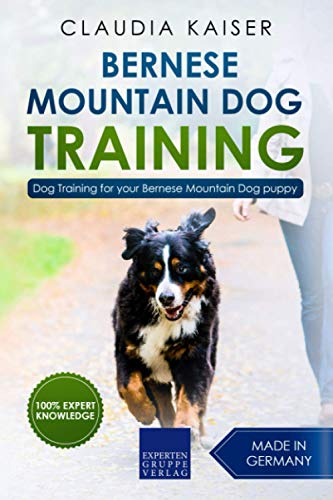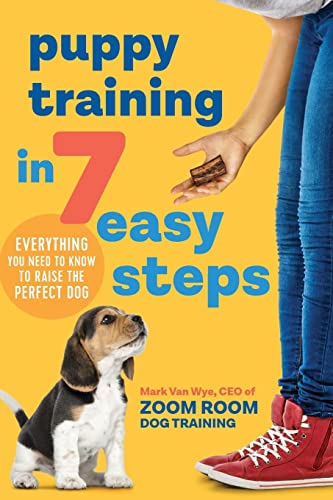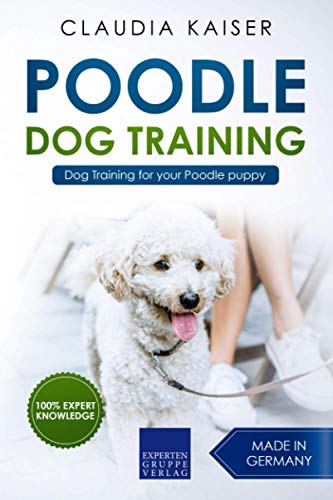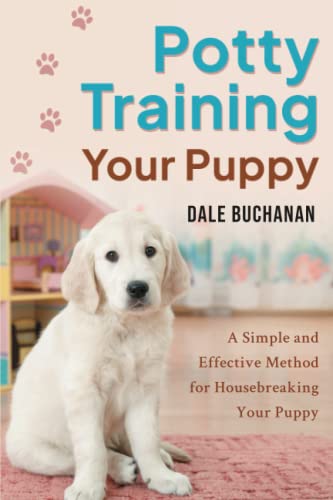When it comes to finding the best dog training books for puppies, there are certain key points to consider. Here are five key points to bear in mind when looking for the right book:
1. Choose a book that focuses on positive reinforcement: Positive reinforcement is the most effective way to train puppies, so make sure to look for a book that focuses on positive reinforcement techniques.
2. Look for a book that is written by an experienced trainer: Look for a book that is written by an experienced dog trainer who has a good understanding of the best methods for training puppies.
3. Consider the age of your puppy: Different books may be more suitable for different age groups, so make sure to select a book that is suitable for your puppy's age.
4. Understand the different training techniques: Different books may focus on different techniques, so make sure to understand the different approaches before choosing a book.
5. Read reviews: It's important to read reviews of the book before buying, as this will give you an idea of how effective it is.
In short, when looking for the best dog training books for puppies, make sure to consider these five key points. Choose a book that focuses on positive reinforcement, is written by an experienced trainer, is suitable for your puppy's age, and understand the different training techniques. Finally, read reviews of the book before purchasing it to make sure it will be effective for your pup. With these tips in mind, you should be able to find the perfect book to help train your puppy.
10 Best Dog Training Books For Puppies
| # | Product Image | Product Name | Check Price |
|---|---|---|---|
|
1
|
|
||
|
2
|
|
||
|
3
|
|
||
|
4
|
|
||
|
5
|
|
||
|
6
|
|
||
|
7
|
|
||
|
8
|
|
||
|
9
|
|
||
|
10
|
|
1. Disney Tote Travel Bag Dogs: Dalmatians Lady Tramp Copper Dodger All Over Print

This Disney tote travel bag is the perfect way to take your favorite furry friends with you wherever you go. With an all-over print, this bag features beloved characters from classic Disney films, including Tramp and Lady from Lady and the Tramp, Patch, Pongo and Perdita from 101 Dalmatians, Copper from Fox and the Hound, Percy from Pocahontas and Dodger, Tito, Georgette, Rita, and Francis from Oliver and Company.
Measuring approximately 15” x 12” x 4”, this stylish tote bag has double shoulder straps with a “rope” style and a 10” strap drop. It is officially licensed by Disney and wipes clean with a damp cloth. It is perfect for carrying your everyday items, from makeup to school supplies, and looks great too. Don’t go anywhere without your favorite Disney Dogs!
Best Dog Training Books For Puppies FAQs
What are the 5 golden rules of dog training?
The five golden rules of dog training are:
1. Establish a Positive Relationship: Establishing a positive relationship with your dog is the foundation of successful training. This means providing your dog with plenty of love, attention, and rewards for good behavior.
2. Be Consistent: Consistency is key when it comes to training your dog. Make sure you use the same commands and rewards each time you train your dog.
3. Use Positive Reinforcement: Positive reinforcement is one of the most effective ways to train your dog. Reward your dog with treats, praise, or playtime when they do something correctly.
4. Be Patient: Training your dog takes time and patience. Don’t expect your dog to learn a new command overnight.
5. Practice Makes Perfect: Repetition is key when it comes to training your dog. Make sure you practice each command multiple times a day until your dog has mastered it.
By following these five golden rules of dog training, you can ensure that your dog is well-behaved and obedient. Establishing a positive relationship with your dog, being consistent, using positive reinforcement, being patient, and practicing regularly are all essential components of successful dog training. With patience and dedication, you can teach your dog to be a well-mannered and obedient companion.
What are the first things you should train your puppy to do?
The first things you should train your puppy to do are basic obedience commands such as sit, stay, come, and down. Teaching your puppy these commands will help you establish yourself as the leader of the pack and will help your puppy understand what is expected of them. Additionally, teaching your puppy basic commands will help them learn how to behave in different situations and will help them understand boundaries.
You should also start teaching your puppy basic house rules such as not jumping on people, not chewing on furniture, and not barking excessively. Establishing these rules early on will help your puppy understand what is acceptable behavior and what is not.
It is also important to start socializing your puppy early on. Introducing your puppy to different people, animals, and environments will help them become more comfortable in different situations and will help them learn how to interact with others.
Finally, it is important to start teaching your puppy basic grooming habits such as brushing their teeth, brushing their coat, and trimming their nails. This will help your puppy become more comfortable with being handled and will help them understand that grooming is a part of their daily routine.
Overall, teaching your puppy basic obedience commands, house rules, socialization, and grooming habits are the first things you should train your puppy to do. Establishing these habits early on will help your puppy become a well-behaved and well-rounded pup.
What is the best age to start obedience training a puppy?
The best age to start obedience training a puppy is between 8 and 12 weeks old. This is the optimal time for puppies to learn basic commands and behaviors, as they are still in the early stages of development and are more likely to be receptive to new information. During this time, puppies are also more likely to form positive associations with the training process, making it easier for them to learn and remember commands.
When training a puppy, it is important to keep sessions short and fun. Puppies have short attention spans and can become easily overwhelmed or distracted. Start with simple commands such as “sit” and “stay” and reward your puppy with treats or praise when they obey. As your puppy progresses, you can add more complex commands and gradually increase the difficulty of the tasks.
It is also important to be consistent with your training. Puppies learn best when they are given consistent commands and rewards. If you are not consistent, your puppy may become confused and may not respond to commands. Additionally, it is important to be patient and understanding with your puppy. Training can be a long process and it is important to remember that puppies are still learning.
Overall, the best age to start obedience training a puppy is between 8 and 12 weeks old. During this time, puppies are more likely to be receptive to new information and form positive associations with the training process. It is important to keep sessions short and fun, be consistent with commands and rewards, and be patient and understanding with your puppy. With the right approach, you can help your puppy learn basic commands and behaviors and create a strong bond between the two of you.
What is the best puppy training method?
The best puppy training method is one that is positive, consistent, and tailored to the individual puppy. Positive reinforcement is the most effective way to train a puppy, as it encourages desired behaviors and discourages unwanted behaviors. This can be done by rewarding the puppy with treats, verbal praise, or physical affection when they do something correctly. Consistency is also key, as puppies learn best when they are given the same commands and expectations each time. Finally, it is important to tailor the training to the individual puppy, as different breeds and personalities may require different approaches.
For example, a puppy that is more independent may need more structure and consistency, while a puppy that is more social may need more positive reinforcement. Additionally, puppies should be trained in small steps, as this will help them learn more quickly and effectively. It is also important to be patient and understanding, as puppies are still learning and may make mistakes. Finally, it is important to provide plenty of opportunities for the puppy to practice and master the skills they are learning. With the right approach, puppies can learn quickly and become well-behaved members of the family.










